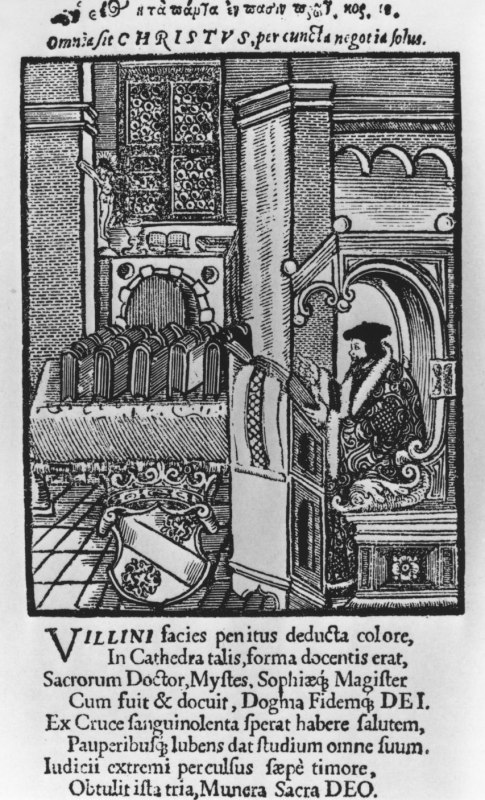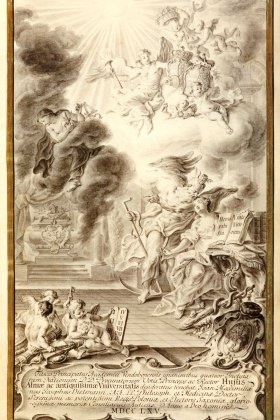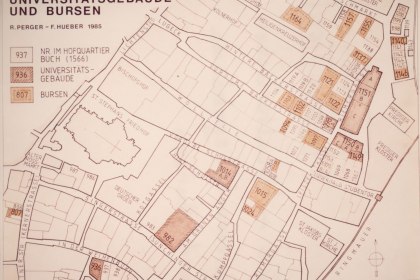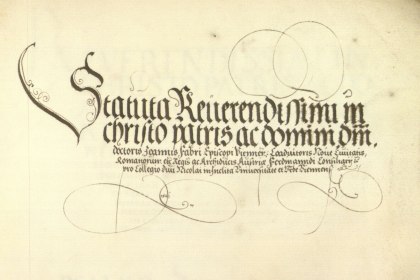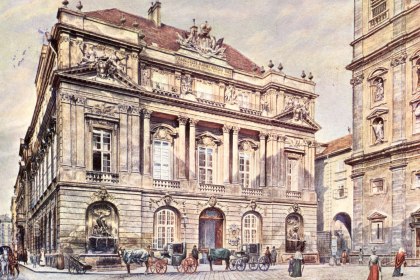Medieval and early modern book stock at the University of Vienna
The libraries at the University of Vienna and their history represent an extremely valuable reservoir of knowledge, since texts and books are the foundations of academic research and teaching. The transition from humble assortments of single codices to comprehensive manuscript collections and printed publications, medical and astronomical instruments, globes, maps and much more marks the development from the Middle Ages to the 18th century.
In 1365 the “universitatis publica libraria” came into being with the founding document of the University of Vienna. In this it is legally stipulated that the estates of university members without heirs were to become university property and that any books acquired in this way were to be displayed in the “gemaine půchkamer und libereye”. Manuscripts as an intangible as well as material treasure thus played a significant role in the medieval university since its foundation. At first, the scope was limited to a few works that were kept in an Armarium, a cabinet. Step by step the collection grew through acquisition, gifts and legacies.
Not one, but many university libraries emerge
The diversity of the university corporations is reflected in the broad spectrum of the now developing manuscript collections in the colleges, faculties and bursae. Remarkably, the library was neither institutionally nor spatially a single entity, but it consisted of many book collections housed at the various corporations to which they belonged. Graduated university members had access to them, while for a long time students were prohibited from using them. The library of the Faculty of Arts was explicitly highlighted in the renewal of the university foundation, the Albertinum of 1384. In further consequence it took up a preeminent position among the libraries. Initially conceived as a desk library with codices fastened to chains (“libri catenati”), the Arts Library later became a hall library in a building next to the Duke’s College, acquired in 1492 – the former heart of the old university quarter. At first this building also contained the university hospital, but Bonifaz Wolmuet’s plans from 1547 only show the “libereye” anymore.
In 1578 the Royal Library’s prefect, Hugo Blotius, names this library, the library of the Duke’s College (collegium ducale) and Johann Fabri’s library as the most important in Vienna. His vision was to unite all these collections in one central library. Bishop Johann Fabri’s library was considered one of the most important humanistic libraries north of the Alps. Fabri bequeathed it to the collegium trilingue he had founded, but the downfall of the institution already began shortly after his death. The collections were then divided up between the Arts Library and the coderie Goldberg.
Deterioration of university book stocks
As a consequence of the 1623 incorporation of the Jesuit College into the University of Vienna, the conflicts between the order and the Faculties of Law and Medicine had a negative impact on the university library collections. This deterioration took on a devastating magnitude and sealed the collections’ fate. The Jesuits had stored their books in a special tract of the academic college they had built. The resplendent and richly decorated hall library (at what today is Postgasse 9) was fitted with repositories made from oak. The many attempts by the Societas Jesu to incorporate the university’s book stocks failed, however. Only the Artist Library was joined with the library of the former Duke’s College and collections from the bursa libraries. Neglectful treatment of the university library’s collections as well as an argument about parts of the Fabri library – which finally were awarded to the university in 1718 – led to a complete deterioration of the library stocks. At fault were poor conservational conditions in unsuitable library rooms and a loss of books.
Surrender of the historical library possessions to the court library
When the reconstruction of the aula building in the 1750s (today the Academy of Sciences) left no more adequate room for the now unified book stocks, the university gave them to Maria Theresia to her free disposal, with the result that more than 2800 manuscripts, incunabula and adligats were transferred to the royal court library. A step, therefore, that seems like an anachronism to the scientifically oriented thinking of the Enlightenment. And yet, the suppression of the Society of Jesus and the Josephinist monastery dissolutions of the 1770s and 1780s had a far-reaching impact on the University of Vienna’s library history and laid the foundation for the re-establishment of the University Library of Vienna.
Articles
- The University Library
-

Detail aus dem Stiftbrief der Universität Wien (deutsche Fassung), 1365
Die Geburtsstunde der Universitätsbibliothek wird 1365 durch die Gründungsurkunde der Universität Wien eingeläutet. Darin wird rechtlich verbrieft,...
-
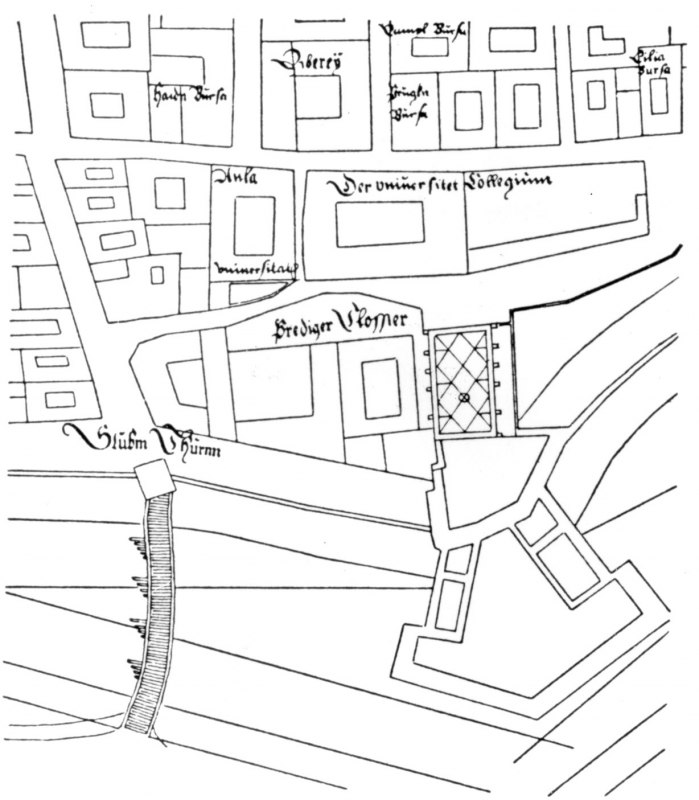
Alte Universität (Herzogskolleg und später entstandene Universitätsbauten) im Stadtplan von Bonifaz Wolmuet (Detailansicht), 1547
Der Ausschnitt des Stadtplanes von Bonifaz Wolmuet zeigt den Teil des Wiener Stubenviertels, in dem die Alte Universität beheimatet war, vor der...
Last edited: 03/04/24
Herzogskolleg („Collegium ducale“)
Älteres Studentenspital und Bibliothek
Fabri-Stiftung („Collegium trilingue“)
Akademisches Kolleg („Collegium Academicum Viennense Societatis Jesu“) mit Alter Aula
Archiv der Universität Wien, Institut für Byzantinistik
Maria-Theresianisches Universitäts-Gebäude „Neue Aula“

